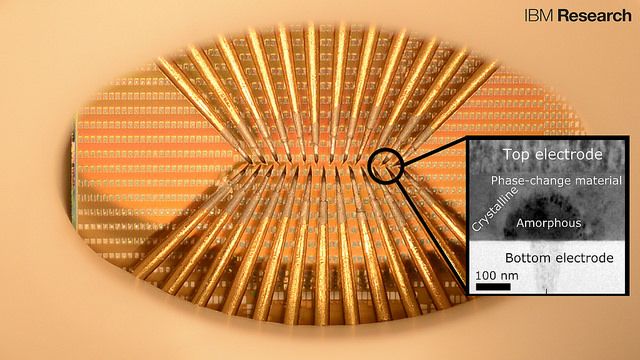A prototype chip with large arrays of phase-change devices that store the state of artificial neuronal populations in their atomic configuration. The devices are accessed via an array of probes in this prototype to allow for characterization and testing. The tiny squares are contact pads used to access the nanometer-scale phase-change cells (inset). Each set of probes can access a population of 100 cells. There are thousands to millions of these cells on one chip and IBM accesses them (in this particular photograph) by means of the sharp needles (probe card). (credit: IBM Research)
Scientists at IBM Research in Zurich have developed artificial neurons that emulate how neurons spike (fire). The goal is to create energy-efficient, high-speed, ultra-dense integrated neuromorphic (brain-like) technologies for applications in cognitive computing, such as unsupervised learning for detecting and analyzing patterns.
Applications could include internet of things sensors that collect and analyze volumes of weather data for faster forecasts and detecting patterns in financial transactions, for example.
Read more










Comments are closed.